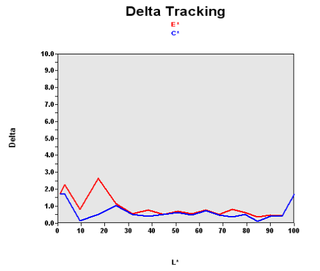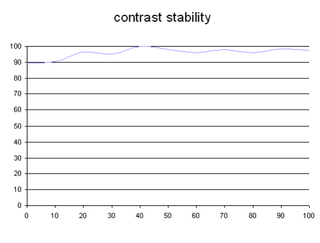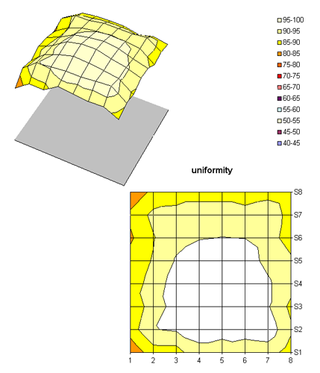8ms 19" LCDs: Speed for Gaming, but at What Cost?
Good Color Fidelity
With the calibration test, the FP937S+ proved to have surprising fidelity.

For a TN+film panel, the 937S+ did very well. 92% of the colors were rendered correctly. The monitor did show errors in the darkest colors, but after calibration the situation was much better. Even before calibration the colors were already very faithful for a panel that uses this technology.
| Black spot | White spot | Contrast |
|---|---|---|
| 0.4 | 220 | 550: 1 |
The specifications don't lie (much). The display is very bright and the contrast is appreciable. What's even better is that the black level is quite good.

The contrast had very good stability, which means you can lower the brightness without losing too much image detail. High brightness is a good thing when you're screening video because you're farther from the screen, but when you need to use your PC for office applications, it's better to lower the brightness to avoid eye fatigue.

Like the L90D+, the FP937S+'s spatial uniformity is beyond reproach. It can easily be classified among the best in this category. The upper part of the panel does seem darker than the lower part, but it's imperceptible to the naked eye.
Overall, it appears that the new fast 19" panels have exceptional static qualities. The monitors we've seen up to now have shown good uniformity with very faithful color rendering. That's a quality that will interest photography buffs, for whom the choice of an LCD PC monitor has been very tough until now. On the one hand, there were VA panels, with a good level of black, excellent fidelity, but terrible latency. On the other were "gamer-oriented" panels, fast enough to display games and video decently, but with glaring colors. But now there are 8ms panels that are fast AND have good color fidelity.
Stay On the Cutting Edge: Get the Tom's Hardware Newsletter
Join the experts who read Tom's Hardware for the inside track on enthusiast PC tech news — and have for over 25 years. We'll send breaking news and in-depth reviews of CPUs, GPUs, AI, maker hardware and more straight to your inbox.
Current page: Good Color Fidelity
Prev Page BenQ 937S+: Speed Above All Next Page Surprisingly Good ResponseMost Popular



